- What is a red team readiness assessment?A red team readiness assessment evaluates whether your organization has the necessary security controls, processes, detection capabilities, and organizational alignment in place before conducting a full red team engagement. It helps you determine if investing $50K-$200K in red teaming will actually provide value, or if you need to build foundational capabilities first.
- How long does the assessment take?The assessment takes 5-7 minutes to complete. You'll answer 15 questions across 5 critical security categories: Planning & Scope, Detection & Response, Communication & Rules of Engagement, Technology & Tooling, and Post-Engagement Review.
- What do the readiness scores mean?
Critical Risk (0-25 points): Your organization has significant security gaps that must be addressed before red team testing. Focus on establishing baseline logging, incident response procedures, and asset management.
Developing Maturity (26-50 points): You've made progress but need to strengthen detection capabilities, formalize processes, and implement purple team exercises before a full red team engagement.
Red Team Ready (51-75 points): Excellent! Your organization demonstrates mature security capabilities and is ready for comprehensive adversary emulation and advanced attack scenarios.
- Is this assessment really free?Yes, completely free with no hidden costs. You don't even need to provide an email address to see your results.
- Who should take this assessment?This assessment is designed for CISOs, Security Directors, SOC Managers, Compliance Officers, IT Directors, and anyone responsible for planning, budgeting, or executing red team engagements. It's also valuable for organizations considering their first red team exercise.
- What happens after I complete the assessment?You'll immediately receive your readiness score, a breakdown of your performance across all 5 categories, and specific recommendations tailored to your maturity level. You can optionally download a comprehensive PDF report or book a complimentary 30-minute strategy consultation with our red team operators.
- How is this different from a penetration test?Penetration tests typically focus on finding vulnerabilities in specific systems or applications. Red team engagements simulate real-world adversaries using multiple attack vectors, testing not just your technical controls but also your people, processes, and detection capabilities. This assessment helps you determine if you're ready for that comprehensive evaluation.
- Why do 63% of organizations fail red team engagements?Most organizations rush into red team testing before establishing critical foundational capabilities like centralized logging, endpoint detection and response (EDR/XDR), tested incident response procedures, and purple team processes. Without these basics, they can't detect attacks, respond effectively, or learn from the engagement—wasting significant budget.
- What if my score is low?A low score isn't bad news—it's valuable intelligence. It means you've identified gaps before wasting $50K-$200K on premature testing. The assessment provides specific, prioritized recommendations to improve your security posture. Many organizations improve from "Critical Risk" to "Red Team Ready" in 6-12 months with focused effort.
- Do you offer services beyond the assessment?Yes. Bluefire Redteam provides comprehensive red team and adversary emulation services for organizations at all maturity levels. For organizations scoring in "Critical Risk" or "Developing" ranges, we offer security program gap analysis and maturity acceleration services. For "Red Team Ready" organizations, we conduct full-scope adversary emulation engagements.
- How does this compare to other security assessments?Most security assessments focus solely on technical vulnerabilities. This readiness assessment evaluates the complete ecosystem required for successful red team testing: technical controls, organizational processes, communication frameworks, and continuous improvement capabilities. It's a maturity assessment, not a vulnerability scan.
- What's the difference between red team and vulnerability assessment?Vulnerability assessments identify known security weaknesses in systems. Red teams simulate real adversaries who chain multiple techniques together, test your detection capabilities, evaluate your response procedures, and expose gaps in both technology and processes. You need strong vulnerability management before red teaming is valuable.
- What if we disagree with our score?The assessment is based on common patterns from hundreds of engagements, but every organization is unique. If you score lower than expected, book a free consultation with our operators to discuss your specific situation. Sometimes organizations have compensating controls or context that changes the picture.
- What if we score "Red Team Ready" but have never done red teaming?Perfect timing! A "Red Team Ready" score indicates you have the foundational capabilities to benefit from a comprehensive engagement. We recommend starting with a scoped red team exercise focusing on specific attack scenarios relevant to your threat model, then expanding to full adversary emulation based on results.
- How do you calculate the readiness score?Each question is scored on a 1-5 scale based on security maturity levels derived from industry frameworks like NIST, MITRE ATT&CK, and our experience from 200+ real-world engagements. Your total score (0-75) reflects your overall readiness, while category scores identify specific strengths and gaps.
- What is purple teaming and why does it matter?Purple teaming is collaborative security testing where red team (attackers) and blue team (defenders) work together in real-time. The red team executes techniques while the blue team attempts detection, then both teams review what worked and what didn't. This accelerates security improvement faster than isolated red or blue team activities.
